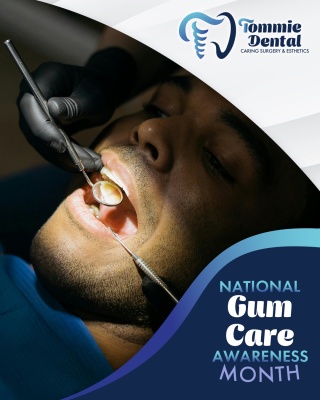The 7 Best Toothpastes for Bad Breath, According to Dental Experts
:max_bytes(150000):strip_icc()/the--best-toothpastes-for-bad-breath-tout-d51d79c76195497cad72da90a4f70f38.jpg)
As much as you love garlic (same), no one (including your coworkers) likes its effect on our breath. Bad breath is inevitable at one point or another, whether it’s morning breath, after an especially oniony meal or espresso, or something more serious like gum disease. “Oral bacteria communicates and organizes to create a biofilm, which attaches to your teeth once a day on average,” says Kevin Sands, D.D.S., a cosmetic dentist in Beverly Hills. This accumulation leads to mouth odor, which is less than ideal for almost every life circumstance.
Luckily, a dentist-approved toothpaste can help you stop bad breath in its tracks and feel confident getting up close and personal with others. We tested leading bad breath toothpastes for six weeks to find these 10 best for every type of icky situation.
Read on below for the best toothpastes for bad breath, backed by testers and experts.
:max_bytes(150000):strip_icc()/biotne-gentle-formula-fluoride-toothpaste-9b80da81ad46441ba78bafc42a825e9a.jpg)
-
Long-lasting freshness
-
Gentle on gums
Flavor: Mint
Our tester loved the gentle minty flavor and lingering clean feeling this toothpaste provides. It has a creamy, not gritty texture and the mintiness isn’t overwhelming or too harsh — she reported she could eat and drink about 15 minutes after brushing without ruining her meal with weird flavor interactions. Her mouth felt clean for several hours and she noticed that her gums never bled when using this toothpaste, which she struggled with previously.
Testers say: “I honestly no longer feel self-conscious about having bad breath after switching to this toothpaste (besides the usual morning breath).”
:max_bytes(150000):strip_icc()/bite--toothpaste-bits-made-with-fluoride-95ba931d1de144dca5dfb083dc6cead1.jpg)
Flavor: Mint
This toothpaste comes in pill-like bites in a recyclable (and reusable) glass jar, making this one of the most environmentally friendly options we tested. You have to chew the tablet a bit and use a wet toothbrush to activate the toothpaste, but once it gets going, it’s similar to a typical tube. We did notice a chalkier texture than other toothpastes, but the mild minty flavor and long-lasting clean feeling made this a top contender. It’s also TSA-approved.
:max_bytes(150000):strip_icc()/colgate-cavity-protection-toothpaste-with-fluoride-3778bb16addb49ae951a8bfcea1814e6.jpg)
Flavor: Mint
If you have sensitive teeth or gums, consider this toothpaste that binds to dentin (the layer beneath your enamel) to protect against hot and cold substances. On top of being great for those with sensitivities, it also promises fresh breath, fighting against odor-causing bacteria and leaving you with a minty clean feeling.
This Colgate toothpaste has a mild minty flavor and a creamy texture without a trace of grittiness. We like that it doesn’t leave residue, and though it’s not the longest-lasting toothpaste we tested, it did fare well on testers with sensitive teeth and gums. The flavor is more of a sweet mint than spicy.
Testers say: “This toothpaste delivered the same satisfying brushing experience as a harsher, grittier toothpaste, but was more comfortable on my sensitive gums and teeth. It was noticeably more gentle on my mouth, but equally as refreshing and kept my breath just as fresh.”
:max_bytes(150000):strip_icc()/crest-pro-health-advanced-gum-protection-toothpaste-a87384c19a64437e83fa8f8a351de8d5.jpg)
-
Very foamy
-
Feels high-quality
Flavor: Mint
This Crest toothpaste feels especially high-quality for its price. It leaves teeth feeling refreshed, at least for a few hours. Our tester felt that she needed to brush again during the day to fully combat bad breath after lunch, but liked that the gel-like texture was sturdy and foamed well, providing excellent coverage.
:max_bytes(150000):strip_icc()/made-by-dentists-sensitive---whitening-professional-toothpaste-605ae25a93c741b48b6be161ab7c9405.jpg)
Flavor: Mint
This Arm & Hammer toothpaste fights bad breath and whitens teeth in just six weeks, but gently (read: your teeth won’t feel overly sensitive or irritated after using). Baking soda helps remove soft plaque and light staining, and it also has antibacterial properties to help prevent your teeth from decay. Meanwhile, hydrogen peroxide is the active ingredient for tooth whitening. (Note that because the hydrogen peroxide has a low percentage of active ingredients, it’ll take some time to see results).
Check out our full review of fluoride vs. fluoride-free toothpaste.
:max_bytes(150000):strip_icc()/oral-b-pro-expert-all-around-protection-toothpaste-cdfd30a92eef4a30999359601a3f9fc4.jpg)
Flavor: Mint
This toothpaste does its job well and is easy to use. It produces a good amount of foam with a pea-sized amount and the clean minty feeling lasts up to an hour after brushing if you don’t eat or drink. It didn’t leave a film or residue on teeth, though the mintiness was a bit overpowering and takes some getting used to.
:max_bytes(150000):strip_icc()/parodontax-active-gum-repair-breath-freshener-toothpaste-509f26bcd5f34934a090b35e37034267.jpg)
Flavor: Mint
This toothpaste produced noticeably better-smelling breath, even after a night’s sleep with a mouthguard. Our tester didn’t love the clingier texture of this toothpaste, which she felt needed extra rinsing. The flavor is pleasant and smooth, though it doesn’t linger very long after brushing and there was less foaming than she was used to. That said, it was easy to distribute in the mouth.
What to Know About Toothpaste for Bad Breath
- Causes of bad breath: There are several causes of bad breath, also known as halitosis, says Dr. Sands. First, oral health issues (think: gingivitis, periodontal disease, etc.) or gastrointestinal issues can cause an odor. Stinky breath is also a sign of dehydration. And, having a dry mouth feeds more bacteria and disrupts the oral microbiome — one common reason for mouth taping for sleep. More commonly, though, your diet or oral bacteria are to blame. Smelly foods, such as onion or garlic, can leave a lingering odor in your mouth, says Dr. Sands. Beyond food, you can blame the bacteria in your mouth for bad breath.
- Treatments for bad breath: To address bacteria, maintain consistent oral hygiene habits by brushing twice per day and flossing daily, as well as visiting your dentist for regular visits, says Dr. Sands. Stay hydrated and either avoid certain foods that lead to bad breath altogether or brush your teeth, floss regularly, and use mouthwash (which can also help fight cavities and bad breath) after a meal to remove the scent. If your bad breath is due to oral health or gastrointestinal issues, you’ll need to address it with the doctor who’s managing your health concerns.
- Helpful toothpaste ingredients: Toothpaste removes bad bacteria from your mouth, and this bacteria is likely the root cause of any malodorous breath. Your best toothpaste for bad breath will have fluoride, which fights bad breath by maintaining oral hygiene (think: preventing plaque buildup, cavities, and more). There are three types of fluoride approved by the FDA — stannous, sodium, and sodium monofluorophosphate — so look for a toothpaste that contains one of these, which will fight plaque buildup, cavities, and oral malodor. You might also look for toothpaste with antibacterial ingredients to destroy bacteria and maintain a healthy oral microbiome.
Frequently Asked Questions
-
What is the best toothpaste to get rid of bad breath?
When it comes to fighting bad breath, toothpaste ingredients are paramount. “The best toothpaste for bad breath contains fluoride to fight cavities and antibacterial agents to neutralize odor-causing bacteria,” says Dr. Mariam Zade, a board-certified Orthodontist. Using the right toothpaste consistently, for two minutes at least twice a day, along with other oral hygiene practices, will go a long way to ward off mouth odor.
-
What kills bad breath the most?
First, practicing regular oral hygiene will help prevent bad breath from occurring in the first place. When a powerful meal leaves you with a bad taste, opt for a quality toothpaste. The most powerful ingredients to fight bad breath are antibacterial agents, says Dr. Amber Bonnaig, Dental Director of DentaQuest. These include triclosan, stannous fluoride, zinc citrate, or zinc chloride. “Two other good ingredients are baking soda, which neutralizes acids in the mouth and reduces odors, and activated charcoal, also for its neutralizing properties,” she adds.
-
Can toothpaste really cure mouth odor?
Though toothpaste can help, it cannot cure bad breath altogether, says Bonnaig. Bacteria from food, drinks, and other sources can cause bad breath. “This means your overall dental health impacts your bad breath, says Bonnaig. It’s important to treat the root cause, such as gum disease, first. “Once you have a healthy mouth, toothpaste can help prevent new odor-causing bacteria from sticking around – don’t forget to brush your tongue because it collects bacteria, too,” adds Bonnaig.
-
How do you stop bad breath from plaque?
Michael J. Wei, D.D.S., says it’s essential to maintain good oral hygiene to limit plaque, which can contribute to bad breath. He says to brush your teeth for two minutes twice a day, floss at least once a day, and rinse with an antimicrobial mouthwash. Wei also suggests using a tongue scraper or toothbrush to clean your tongue, as bacteria can accumulate and contribute to bad breath. Finally, make regular dentist visits. “Regular dental check-ups and cleanings can help remove plaque and tartar buildup that brushing and flossing may have missed,” he says.
Zade recommends using an electric toothbrush, which “can be more effective at removing plaque than manual toothbrushes.”
Using toothpaste with fluoride can help because the mineral “strengthens teeth and prevents cavities, which can reduce the likelihood of infections and decay that contribute to bad breath,” says Bonnaig. And don’t forget to floss. “Proper flossing removes food particles and plaque from between your teeth, helping to reduce odors,” she says.
-
Why does my breath smell so bad after brushing?
There are a few reasons that bad breath can persist after brushing, according to Dr. Joyce Kahng, a cosmetic and restorative dentist in Orange County, CA. First, if plaque has been left to harden into tartar on your teeth, it can cause mouth odor. Your best bet is to get a professional tooth cleaning to remove the tartar.
Your tongue could also be a culprit. “The tongue has numerous bumps and ridges that can accumulate bacteria, debris, and dead cells, which contribute to odor,” says Dr. Kahng. “Using a tongue scraper morning and night can effectively clean the tongue and significantly improve breath.”
Also, check your tonsils. “In some individuals, the tonsils have crypts (small pockets) where bacteria and debris can calcify into tonsil stones, which often produce a strong odor,” says Dr. Kahng. And surprisingly, even your gut can contribute to bad breath. Gastrointestinal issues may cause your mouth odor to linger after a thorough brushing.
Why Trust Shape
Lizzy Briskin is a New York City-based health, fitness, food, and travel writer for outlets including PEOPLE, Real Simple, Women’s Health, and SELF. A former collegiate runner for Amherst College, she caught the marathon bug post-grad and will run her sixth marathon and fourth Major this year in Chicago. She’s also competed in triathlons and is an avid swimmer, hiker, cyclist, and reader. She has a culinary degree from Cambridge School of Culinary Arts and was formally the food editor at Food Network Magazine, and before that, at Real Simple Magazine.
Our panel of experts tested toothpastes from a range of high-end and drugstore brands. We used the pastes twice a day for six weeks and assessed each product based on texture, flavor, residue, cleaning experience, and effectiveness at combating bad breath. For this article, we consulted and interviewed with the following experts:
- Dr. Mariam Zade is a board-certified Orthodontist who has her doctorate in dental surgery from Columbia University College of Dental Medicine where she developed a solid foundation in dental sciences. She pursued advanced research at Harvard University to further her knowledge.
- Dr. Joyce Kahng is an award-winning Cosmetic and Restorative dentist and the owner of Orange and Magnolia Dental Studio, a luxury boutique dental experience in Orange County, CA. She completed her Dental education at the prestigious University of the Pacific School of Dentistry in 2010, and completed a General Practice Residency at Jacobi Medical Center affiliated with the Albert Einstein School of Medicine.
- Kevin Sands, D.D.S., is a cosmetic dentist in Beverly Hills. He completed extensive training in aesthetic dentistry techniques at the prestigious Las Vegas Institute for Advanced Dental Studies.
- Dr. Amber Bonnaig is the Dental Director at DentaQuest. She completed her dental degree from Meharry Medical College in Nashville and formerly served as faculty at the University of Tennessee providing clinical support to the Advanced Education in General Dentistry residents.
- Michael J. Wei, D.D.S., is a cosmetic dentist in NYC who specializes in general, cosmetic, and restorative dentistry.
link







